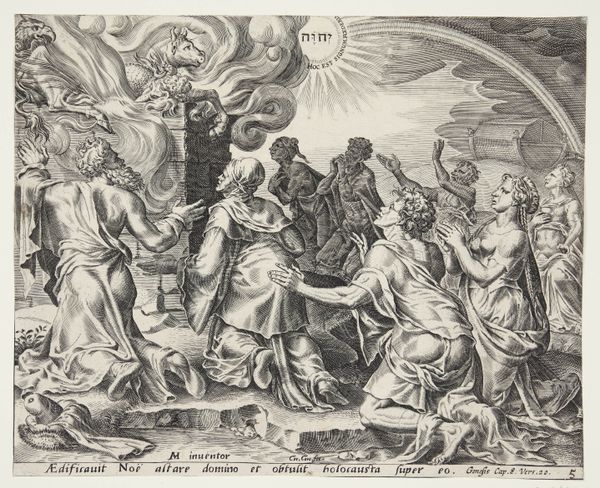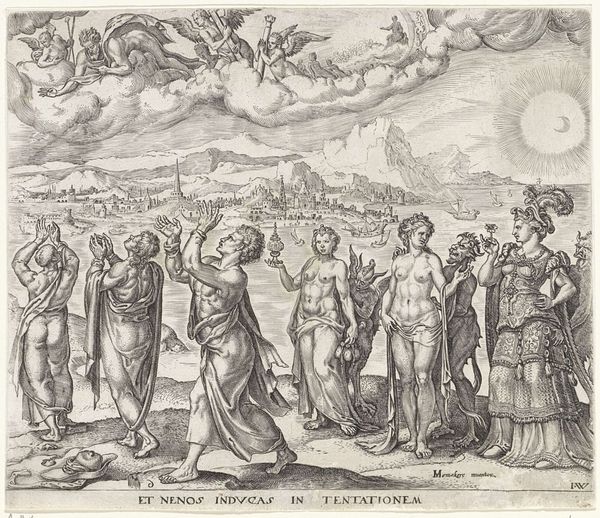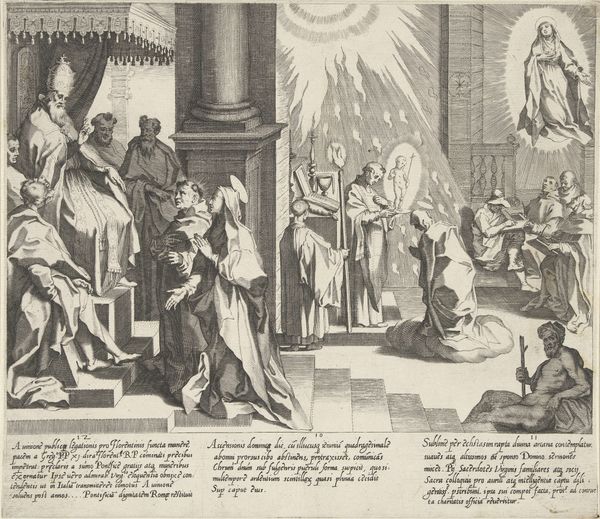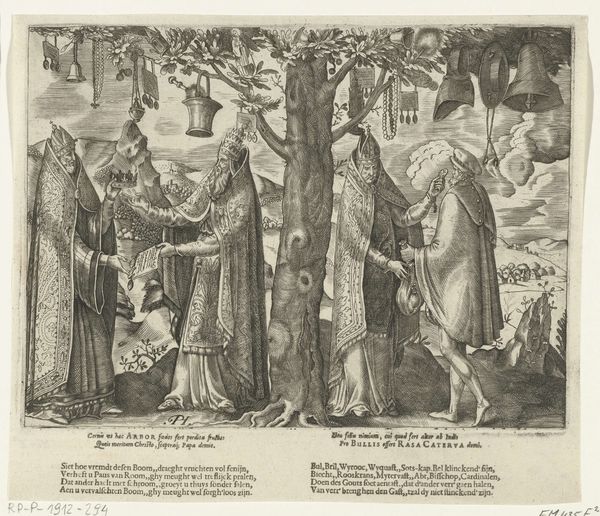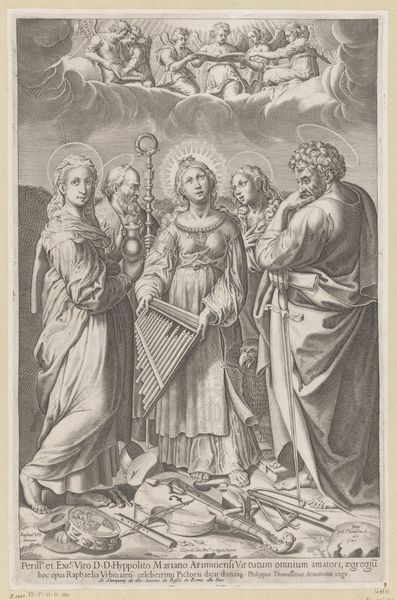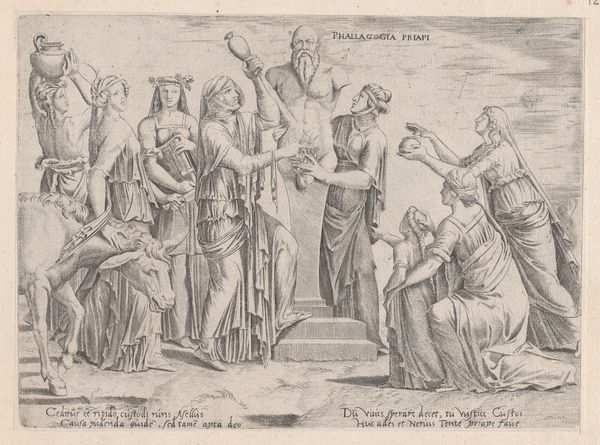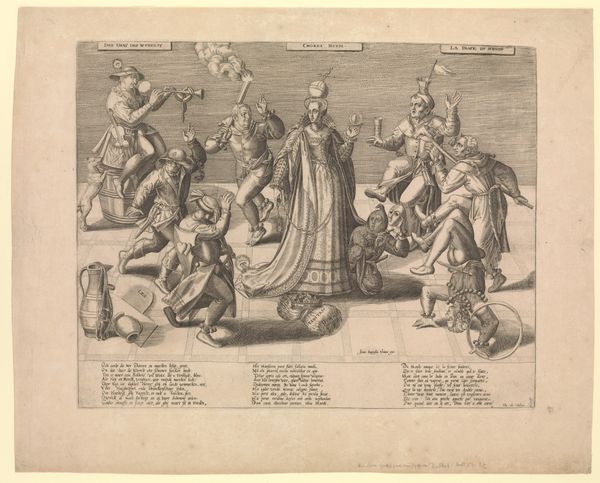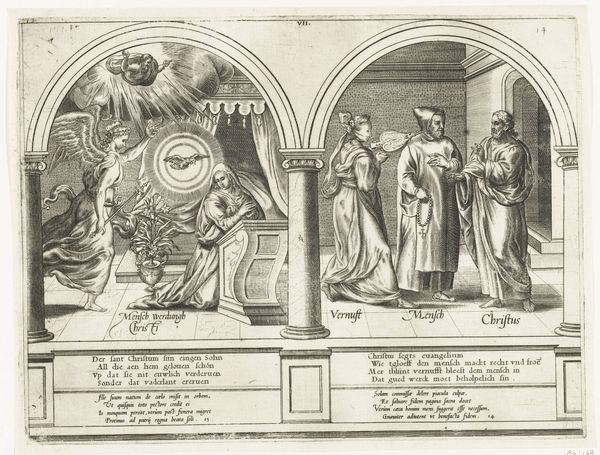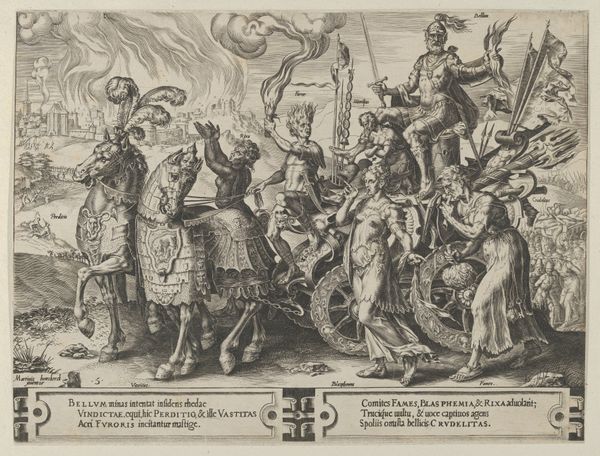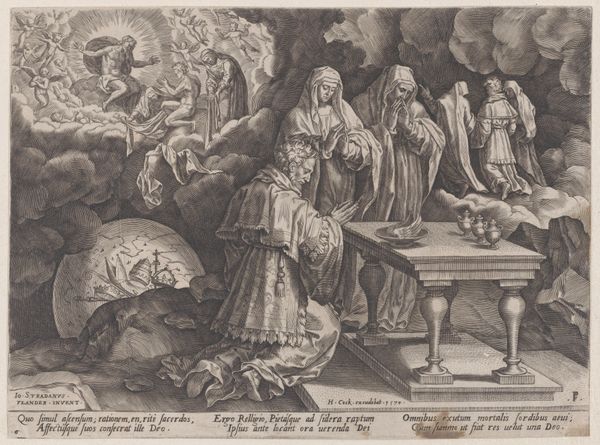
print, engraving
# print
#
figuration
#
line
#
history-painting
#
northern-renaissance
#
engraving
Dimensions: 208 mm (height) x 245 mm (width) (monteringsmaal), 212 mm (height) x 243 mm (width) (bladmaal)
Editor: This engraving, "The Eight Beatitudes" by Harmen Jansz. Muller, made sometime between 1564 and 1567, is striking in its detail, especially considering the medium. The figures seem so weighty and imbued with symbolic importance, despite being rendered simply in lines. It feels very... theatrical. What strikes you when you look at this? Curator: The theatricality you observe is intriguing; I think it echoes the performative aspect of religious teachings in the Northern Renaissance. I'm captivated by the landscape, stark yet dreamlike. The mountains pierce the heavens, where a radiating light source, seemingly divine, looms large. Do you sense a connection between the earthly figures and that ethereal space above? Editor: Absolutely. The figures are framed by that background; it suggests a higher power guiding them. I notice a tension between the intricate clothing of the central figures and the rougher attire of the figures to the side, particularly on the left. Curator: Precisely! Consider who is included in the picture. The clothing may be clues to status, even identity, that Muller is suggesting through carefully arranged visual elements and even Latin phrases near the bottom, hinting at a narrative we can decode, layer by layer, from the earthly to the divine. Do you feel that Muller is making an argument here, in a way, beyond simply representing a biblical scene? Editor: I think so. It feels like a commentary, placing earthly power structures against spiritual ideals. I hadn't noticed the Latin phrases, though! Looking at them now adds another layer of interpretation I need to consider. Thanks! Curator: Indeed. It's always worthwhile considering how historical context frames artwork. The smallest details may change how we engage with the overall narrative, both personally and as part of the human story.
Comments
No comments
Be the first to comment and join the conversation on the ultimate creative platform.
